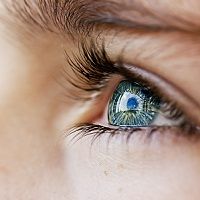Article
Reproxalap Solution Hits Phase 3 Marks for Allergic Conjunctivitis
Author(s):
The investigative solution improved patient metrics for itching, and could be considered for FDA submission later this year.

New phase 3 results for a reproxalap topical ophthalmic solution show the potential therapy could improve symptoms in patients with allergic conjunctivitis at 2 different dosing regimens.
The investigative solution, from biotechnology company Aldeyra Therapeutics, showed in new phase 3 ALLEVIATE Trial results that patients met the primary efficacy endpoint of improved ocular itching, as well as key secondary endpoints, for both .25% and .50% solution.
The ALLEVIATE Trial was a double-masked, randomized, vehicle-controlled, multi-center, parallel-group conjunctival allergen challenge comparing the efficacy and safety of both doses to vehicle in 318 patients with seasonal allergic conjunctivitis. Treatment arms were split 1:1:1 to approximately 100 patients for each.
Investigators assessed for a primary endpoint of ocular itch score (0-4 scale) area in 10-60 minutes post-allergen challenge. The key secondary endpoint was two-point responder rate, which investigators noted is a measure of clinical relevance.
Patients treated with .25% and .50% reproxalap reported statistically significant reductions in ocular itching when compared to those on vehicle (P < .0001; P = .0025, respectively). In two-point responder rates, patients on the 2 doses also reported statistically greater metrics than vehicle (P = .0005; P = .0169), and an anti-inflammatory profile that is notably distinct from current allergic conjunctivitis standard-of-care antihistamine.
The differentiated mechanism of action, as well as these promising phase 3 results, could spell reproxalap’s role in future marketed conjunctivitis therapies, Aldeyra Chief Medical Officer David Clark, MD, MRCP, said.
“There is a large allergic conjunctivitis patient population that is underserved by currently available medications," Clark said in a statement. "The ALLEVIATE results suggest the potential of topical ocular reproxalap as a novel, safe, and effective therapeutic option that could be used to complement existing therapy before resorting to corticosteroids, which can lead to serious ocular toxicity."
With the new ALLEVIATE results, reproxalap has now been tested in more than 700 patients across 7 clinical trials. No concerns regarding safety nor tolerability were observed in any clinical experiences involving reproxalap, and the only observed adverse events have been mild and transient instillation site irritation.
"Consistent with positive results from five prior Phase 2 clinical trials in ocular inflammation, today's announcement confirms the potential of reproxalap as a novel and clinically meaningful approach for the treatment of allergic conjunctivitis,” Aldeyra Chief Executive Officer and President Todd C. Brady, MD, PhD, said. “Given that approximately half of allergic conjunctivitis patients also suffer from ocular dryness, we believe the ALLEVIATE results highlight the relevance of reproxalap to our current phase 3 program in dry eye disease."
In the latter half of this year, Aldeyra intends to meet with regulatory authorities to discuss the new phase 3 results, and to better understand the remaining parameters of a New Drug Application (NDA) submission to the US Food and Drug Administration (FDA).




